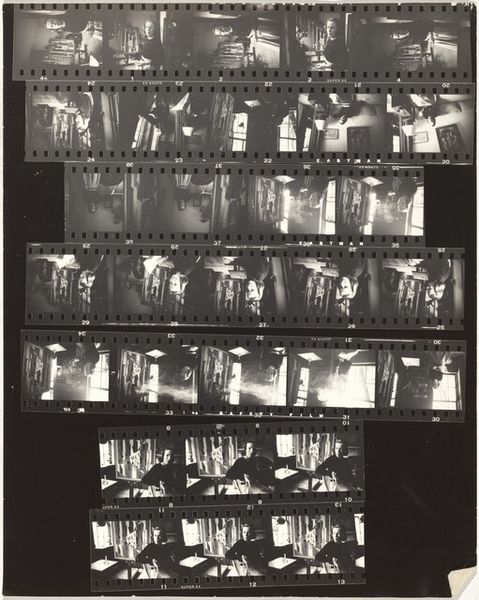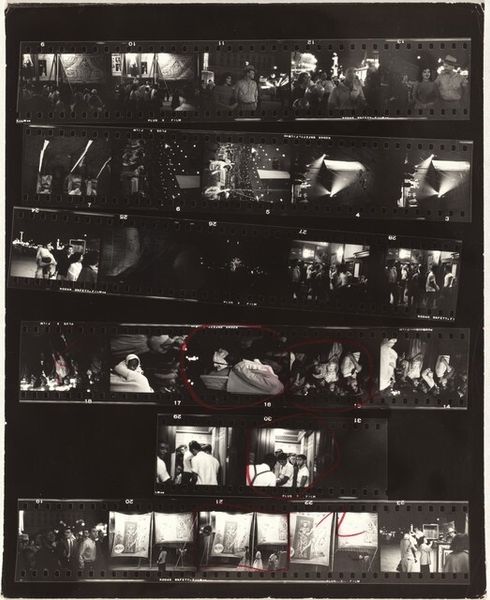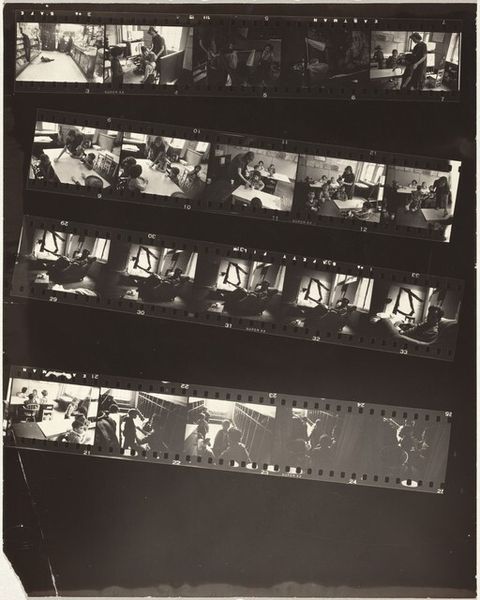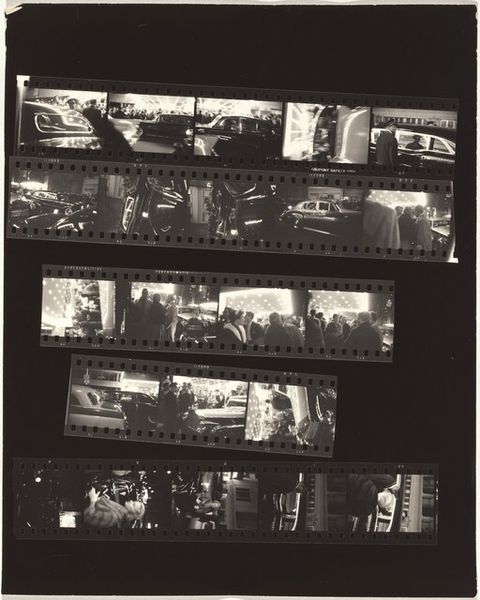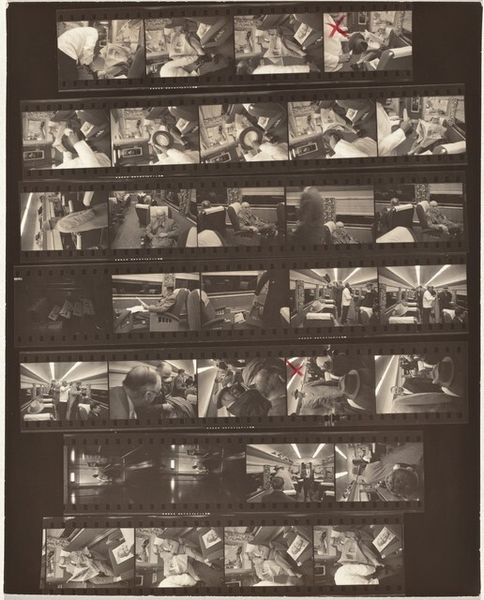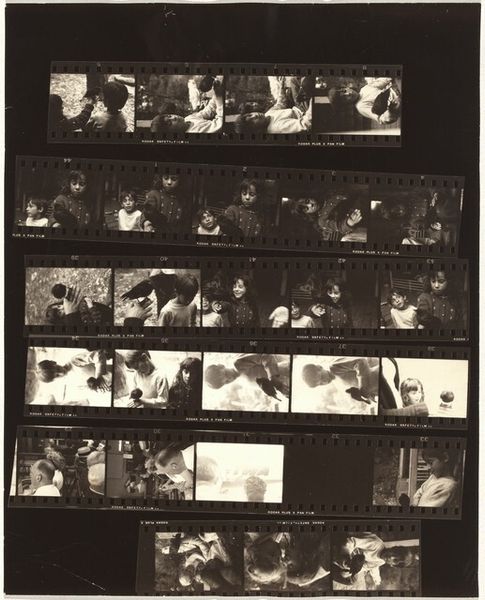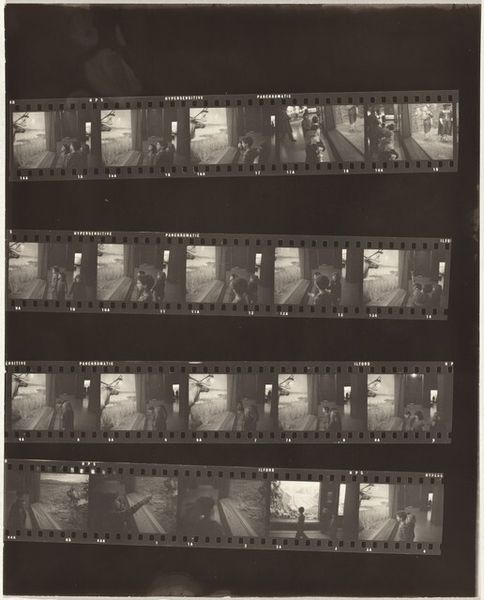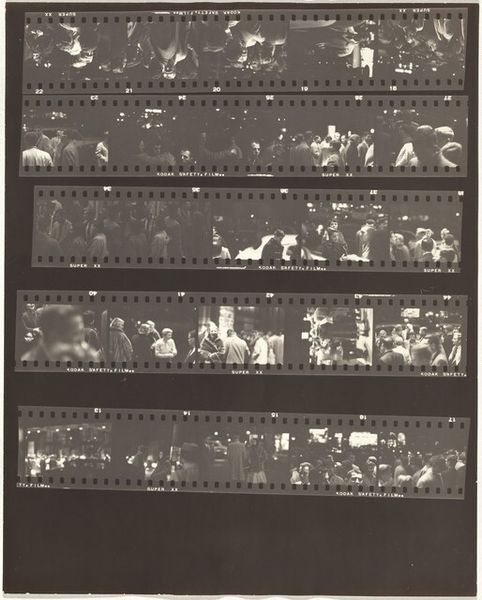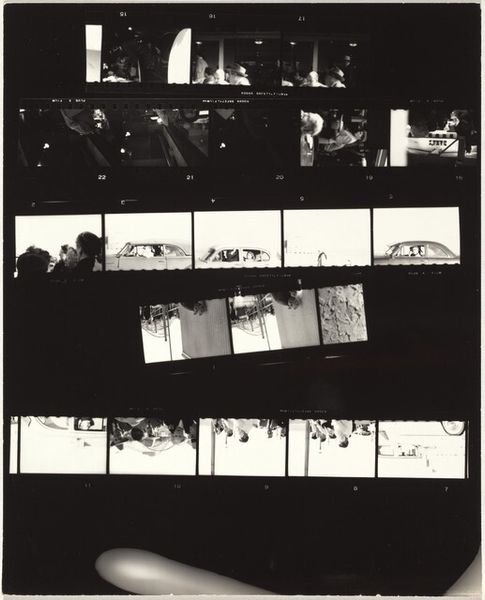
Dimensions: overall: 25.2 x 20.2 cm (9 15/16 x 7 15/16 in.)
Copyright: National Gallery of Art: CC0 1.0
Curator: Here we have Robert Frank's "Richard Bellamy--Painters no number," a gelatin-silver print from approximately the 1950s. What strikes you initially about this piece? Editor: The raw, almost unfinished quality of it grabs me. It’s a series of strips showing contact sheets, complete with sprocket holes and frame numbers. It feels incredibly immediate and process-oriented. Curator: Absolutely. Frank, deeply influenced by the Ashcan School, often aimed to capture unvarnished reality. These contact sheets are fascinating because they give us a glimpse into his selection process, or lack thereof perhaps? Richard Bellamy, the famed art dealer, appears in the shots, surrounded by artists. Editor: That's where the material context comes in, right? The cheap, easily produced nature of photography, especially contact sheets, contrasts sharply with the traditional, labourious production of painting. It democratizes image-making, focusing on the everyday experiences of even "high" art figures like Bellamy. Curator: Precisely. It challenges the myth of the artist as some solitary genius. Frank places Bellamy, the facilitator, the gatekeeper, at the center, within a community. The print also reminds us that photography at this time still fought for recognition as "fine art." It really pushes us to reconsider the artistic hierarchy. Editor: And what about the labour embedded in these types of photos? How long were the working days, and what access did Frank have? I’d argue it points to the very economic underpinnings of the art world. It would be interesting to analyze the type of camera and film he used; knowing how the materials themselves impacted the final result of each image. Curator: An astute observation. The dark monochromatic aesthetic contributes to a sense of gravity, a social realism echoing through time. It moves beyond aesthetic beauty into something more akin to cultural artifact. The images selected –or not selected, offer a snapshot, literally and figuratively, of a specific moment in art history. Editor: Yes. It highlights not just what we see, but the very act of seeing, selecting, and framing reality using rudimentary materials. It brings a crucial awareness about artistic choices involved in what can be mass produced, but is now deemed “fine art”. Curator: Seeing the world as it is through this raw collection, is itself both insightful and, at times, deeply moving. It's a beautiful work. Editor: I agree. Thank you for guiding us through that! It gives one much to ponder on and reflect.
Comments
No comments
Be the first to comment and join the conversation on the ultimate creative platform.


